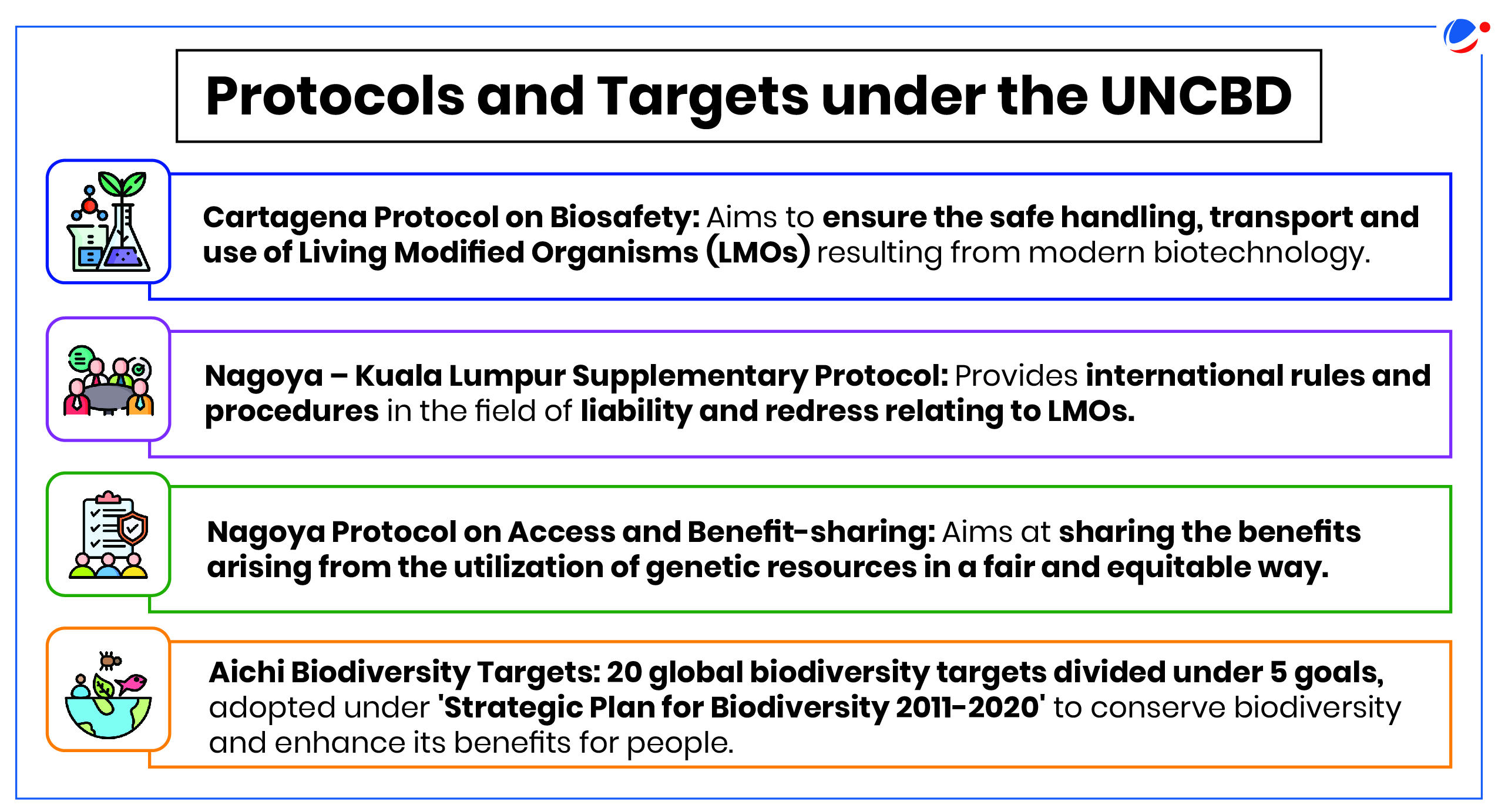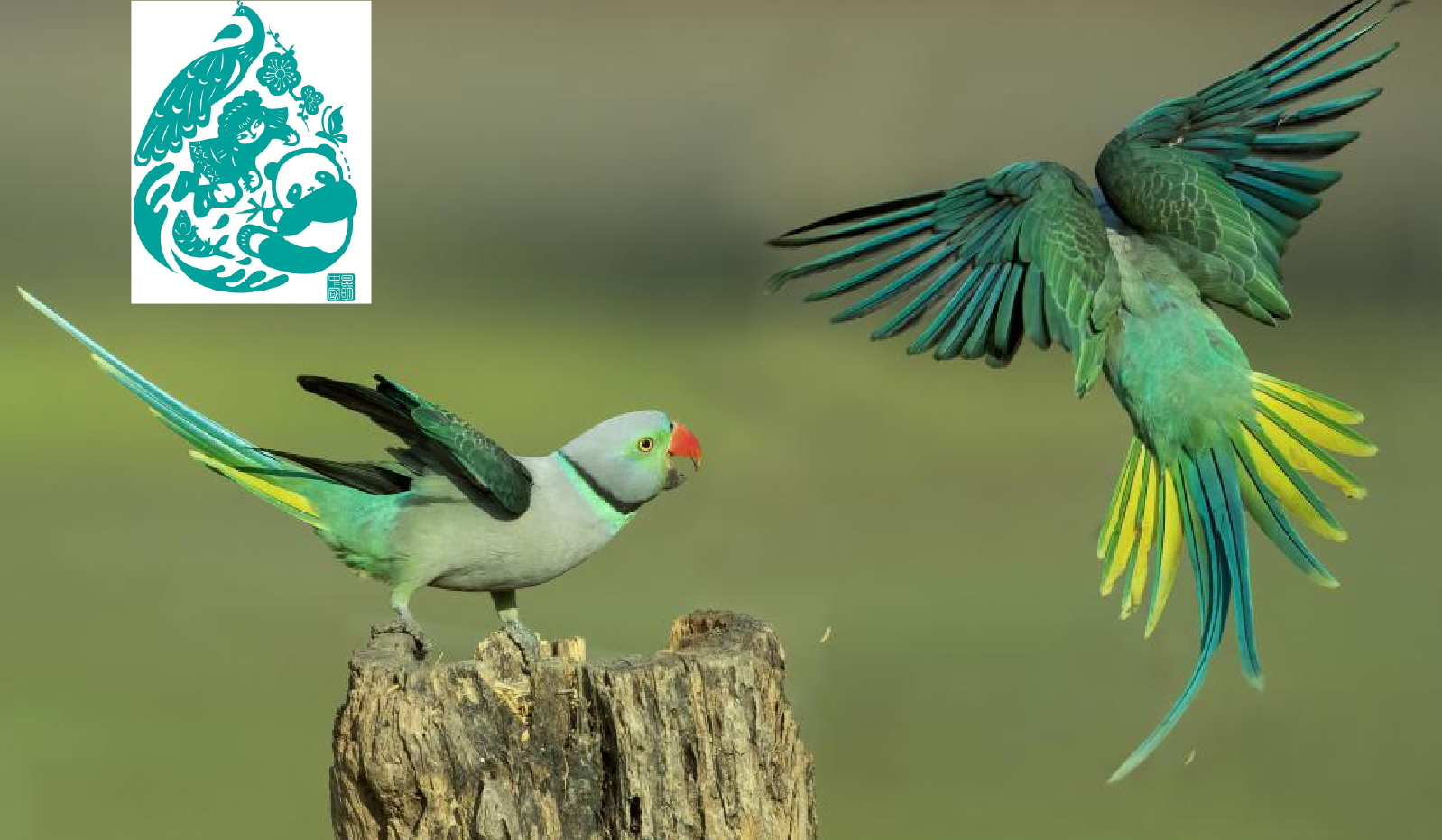Why in the News?
Recently, 16th Conference of Parties (CoP-16) to the UN Convention on Biological Diversity (UNCBD) concluded in Cali, Colombia.
More on the News
- Theme of this year's conference was 'Peace with Nature'.
- It is the first CoP, since adoption of Kunming-Montreal Global Biodiversity Framework (KMGBF) and served as a critical platform to assess the progress and address the ongoing challenges to the KMGB framework.

About UNCBD
- Origin: International legally binding treaty adopted at the United Nation's Conference on Environment and Development (UNCED), Earth Summit, Rio de Janeiro, Brazil in 1992.
- Entered into force in 1993, and operates under the aegis of United Nations Environment Programme (UNEP).
- Objectives: Conservation of biological diversity; sustainable use of its components; and fair and equitable sharing of the benefits arising out of the utilization of genetic resources.
- Secretariat: Montreal, Canada.
- Members: Ratified by 196 members (India became a party to the convention in 1994).
- USA hasn't ratified the convention.
- Governing mechanism: CoP meets every two years (biennial) to review progress, set priorities and commit to work plans.
About KMGBF
|
Major Outcomes of CoP-16
- Financial mechanism for DSI: Operationalisation of Cali Fund for sharing the benefits from use of DSI on genetic resources in a more fair and equitable way.
- Companies benefiting commercially from DSI to contribute 1% of their profit (0.1% of their revenues) to support Indigenous Peoples and local communities.
- Recognition of rights of indigenous communities: Through establishment of permanent subsidiary body under Article 8(j) of the UNCBD and Cali Fund to enhance participation of indigenous people in all convention processes.
- At least 50% of the Cali Fund is for self-identified needs of indigenous communities including women and youth.
- Finance mobilization: Launch of Kunming Biodiversity Fund (KBF) under the aegis of Global Environment Facility (GEF) to support the goals and targets under KMGBF.
- Earlier at CoP-15, Global Biodiversity Framework Fund (GBFF) was agreed and established by GEF.
- Identification of Ecologically or Biologically Significant Marine Areas (EBSAs): Agreement on new and evolved mechanisms to identify EBSAs and update existing ones.
- Crucial for 30-by-30 Target under KMGBF and Biodiversity Beyond National Jurisdiction (BBNJ) Agreement (High Seas Treaty).
- Thematic Action Plan: To address inequity in capacity-building, technology transfer of developing countries and local communities in the field of synthetic biology.
- Invasive alien species management: Guidelines for managing invasive alien species through new databases, improved cross-border trade regulations, etc. to align with the goals of KMGBF.
- Approved Global Action Plan on Biodiversity and Health: The strategy embraces 'One Health' approach to curb the emergence of zoonotic diseases, prevent non-communicable diseases etc.
India's commitment at CoP-16
|
Shortcomings of CoP-16
- Resource and finance mobilization: Developed countries lagged on their commitment to provide $20 billion annually in international biodiversity financing by 2025.
- Also, pledges to GBFF were meagre with only $163 million pledged during COP-16.
- Monitoring framework for KMGBF: Decision to update and complete the Monitoring framework with its indicators to track progress in implementing the KMGBF has not been reached.
- Delay in Planning, Monitoring, Reporting, and Review (PMRR) mechanisms: These mechanisms establish the procedures for review of global and national progress on KMGBF Targets.
- Submission of NBSAPs: Only 44 countries out of 196 member states submitted their updated NBSAPs aligned with KMGBF, while 119 countries reported on their National Targets (step before construction of NBSAP).
- Cali Fund (DSI Fund): Though operationalized, but lacks consensus on contributions to the fund and mechanisms for financial and technical resource allocation.
- Disagreements over biodiversity credits and offsets: KMGBF included these as 'innovative scheme' to increase financial resources for biodiversity protection.
Conclusion
The roadmap for CoP-17 at Yerevan, Armenia, in 2026, lies in solidifying financial mechanisms under KMGBF's Target 19 at the next interim meeting in Bangkok; strengthening Monitoring Frameworks and PMRR mechanisms for accountability; and enhancing NBSAPs with time-bound action plans mirroring NDCs under Paris agreement. Additionally, fostering global cooperation, inclusive partnerships, and technology transfers are critical in achieving the 2030 KMGBF targets.
Digital Sequence Information (DSI)In the recently concluded CoP-16 to CBD, Cali Fund was operationalized to share the benefits arising from uses of DSI of genetic resources in a more fair and equitable way (3rd objective of CBD). About DSI
Significance of DSIGenetic research (e.g. virologists used SARSCoV-2 DSI to design diagnostic kits during COVID-19);Agriculture and food security (e.g. pest-resistant, climate-resilient crop varieties etc.); Biodiversity conservation; preserving traditional knowledge; etc. Challenges with DSILack of equitable benefit sharing; Intellectual Property Rights (IPR) concerns associated with ownership of traditional knowledge; absence of efficient benefit-sharing framework, Lack of accountability; privacy concerns, data security risks, technological constraints, etc. Key Initiatives for DSI
|





